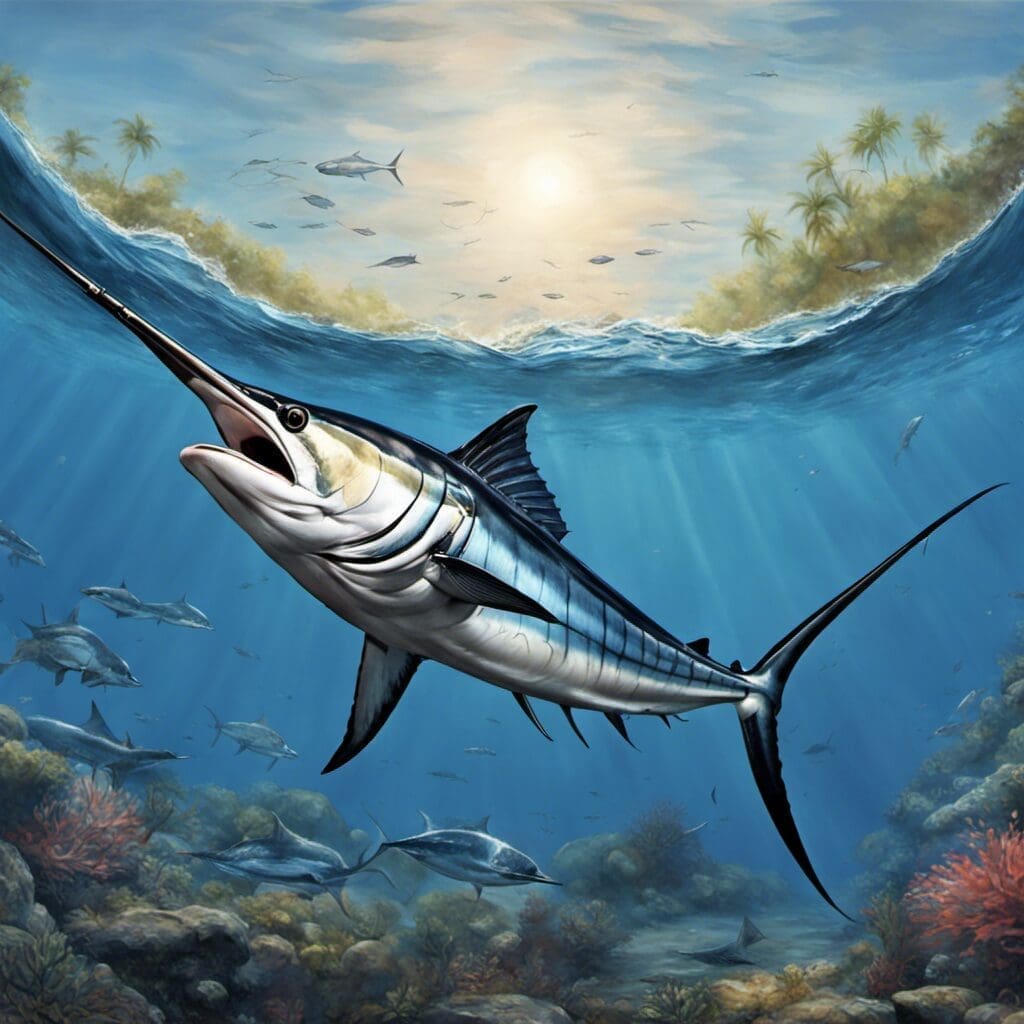Introduction
The Indo-Pacific Blue Marlin, also known as Makaira mazara, is a formidable species from the family Istiophoridae – often renowned for its agility and dart-like speed. Their impressive size, elegant beauty, and spirited fight make them one of the most desired catches for sport fishermen worldwide.
Conservation Status
Listed as ‘Vulnerable’ by the International Union for Conservation of Nature (IUCN), the Indo-Pacific Blue Marlin is threatened primarily due to over-fishing and incidental catch in tuna longline fisheries. Conservation efforts are in place, focusing largely on adjusting fishing quotas and raising awareness about the species’ plight.
Statistics
| Length | Weight | Average Lifespan |
|---|---|---|
| Average: 3.5 meters Range: 2.2 – 4.5 meters |
Average: 170 kg Range: 80 – 400 kg |
15-20 Years |
Distribution
The Indo-Pacific Blue Marlin inhabits the open waters of tropical and temperate parts of the widest ocean–the Indo-Pacific. These marlins demonstrate high migratory tendencies which are generally linked to the sea surface temperature and currents.
Habitats
These awe-inspiring fish reside in the offshore waters, preferring the warm surface layers. They can adapt to different depth ranges depending upon food availability and water temperatures, which usually fall within 22°C to 31°C.
When and Where to See
They are typically more abundant during seasons and in areas of upwelling, mainly driven by climatic conditions. Sightings often peak in the late afternoons when they move towards the surface to feed.
Best Fishing Locations
- North Shore, Hawaii, United States
- Port Stephens, Australia
- Pinas Bay, Panama
- Cape Verde Islands
- Gulf of Mexico, United States
- Guatemala
- Key West, Florida, United States
- Bermuda
- Puerto Vallarta, Mexico
- Luzon, Philippines
- Cairns, Australia
How to Catch
The Indo-Pacific Blue Marlins are best caught using trolled baitfish or squid, but can also be enticed with artificial lures. Techniques like offshore trolling and drift baiting are often recommended. The best time to catch them often aligns with late afternoon into early evening, when these fierce predators are actively feeding.
Identification Guide
Emphasized by a striking cobalt-blue color on top, which fades to a silvery white below, they are characterized by their elongated body, a pointed bill, and a rigid dorsal fin. They can be differentiated from other marlins by the rounded tips of their pectoral fins.
Culinary
The meat of the Indo-Pacific Blue Marlin is rich, semi-firm, and distinctly flavorful. Often smoked or grilled, it is also served raw as sashimi. The flesh is high in protein and contains beneficial omega-3 fatty acids.
Additional Information
These marlins are solitary swimmers and consummate predators feeding mostly on tuna and squid. Their main threat is commercial and recreational fishing. They hold significant cultural and economic importance in many coastal communities, particularly as a trophy in sport-fishing.
References and Further Reading
For further information refer to the works of [Nakamura, I., 1985](https://www.cabdirect.org/cabdirect/abstract/19852917910), [FAO Species Catalogue, Vol. 5](http://www.fao.org/3/ac479e/ac479e00.htm), and [FishBase](https://www.fishbase.se/summary/Makaira-mazara.html). All links open in a new tab

